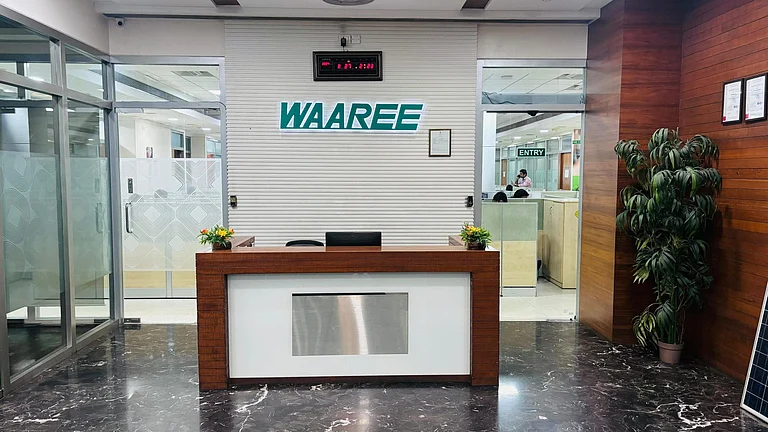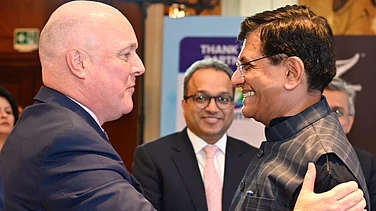With the Budget just a day away, everyone’s eyes are glued on what will roll out on February 1. Budgetary allocations for ongoing reforms impact the Indian economy, which signals how and where the government policies are likely to take the country. Last year’s growth-oriented Budget was set out with a six-pillar philosophy, and the budgetary allocations did align with that emphasis. The analysts would be looking for the same emphasis to continue, with of course widening and deepening of the same and some more additions, if fiscal space permits, pandemic challenges could be turned into an opportunity for economic, social and sustainable development.
Infrastructure allocations last year, an emphasis borne out of the six pillars, went up by 26 per cent over the previous year. That was a growth-enhancing move by the government, especially important in a pandemic year as it created jobs besides boosting production in capital industries like cement (7.8 per cent growth over last year) and steel (with the growth rate of 16 per cent). For the upcoming Budget, the expectations would be to continue on the growth trajectory, by increasing the allocations further and encouraging the private sector to contribute more. To do that, the government would need to consider innovative changes in tax laws by bringing in group taxation and consolidated filing, practices which are already prevalent in some Asian countries. This is to redress the adverse effect of SPVs, created to undertake road and power projects, sectors of higher attention among infra projects. Multiple SPVs often create challenges for the promoter’s viability, unease in tax and regulatory filings and often nightmare for the bankers.
To further deepen private spending in infra projects, the government could also consider allowing foreign long-term infrastructure investors such as sovereign wealth funds, pension funds, private equity funds, and bonds. This will lower the borrowing cost as well as reduce the asset-liability mismatch, suffered by borrowings from banks and NBFCs. These changes will also help crowd-in the private sector.
Similarly, the National Asset Monetisation Plan need to be speeded up so that it unlocks the economic and business value of the existing assets and use them gainfully. The monetisation plan, to be implemented by 2025, is intended to cover Rs 6 lakh crores of road sector (27 per cent), railways (26 per cent) and power (15 per cent). So far, road and power projects have gone off well due to the positive role being played by InvITs and toll-operate-transfer mechanisms. Brownfield projects in other lagging sectors would need similar mechanisms in the upcoming Budget.
The profit linked incentives (PLI) scheme has been a hit within the industry, with an outlay of Rs 2 lakh crores which covers 13 sectors, a mix of old manufacturing as well as new areas. It does add 4-6 per cent to the top line while aiming to remove sectoral disabilities, create economies of scale, and ensure efficiencies. The industry should use the opportunity to improve on the present product quality, reduce the cost to the consumer, become export competitive, and hopefully spread the manufacturing base within India while creating multiple supply chains. The government in the upcoming Budget should aim to include other sectors under the ambit of the PLI scheme as well.
Rising commodity prices, problems in accessing credit and payment delays have affected the MSME segment, which got ravaged during the pandemic. Steps such as Emergency Credit Line Guarantee Scheme may have helped them to a certain extent, but that was inadequate. Their main source of financing continues to be shadow banks and informal sources, which makes accessing capital expensive. Thus, it is important to think of ways to ensure liquidity support to them so that they can be rejuvenated. The factoring platform of TReDS (Trade Receivables Discounting System) should be made more popular and small enterprises should be encouraged to access the same.
India is experiencing a digital transformation through start-ups. During the current FY, more than 2200 new start-ups were founded, showing a CAGR growth of 30 per cent or so and creating more than 6.5 lakh direct jobs. These start-ups raised $24 billion of equity with a market capitalisation of $48 billion. Given that the start-ups are adding positively to the economic indicators, the government should give them an extended hand by increasing the existing scheme coverage by at least another 5 years. As per the existing tax scheme, start-ups incorporated between April 1, 2016, till March 31, 2022 (extended by a year during the last Budget) are eligible for getting a 100 per cent tax rebate on profit for a period of three years in a block of seven years provided their annual turnover does not exceed Rs 25 crores in any FY. This was narrow in approach as it was only to meet their working capital requirements during their initial years of operation. The government should consider giving these start-ups support so that they become a global player and unleash the entrepreneurial potential of the country.
Consumption has been a driver of the economy, pre-pandemic and thus, spurring it through personal tax measures such as tax rationalisation, increasing the limit on interest deduction on home loans, and increasing standard deductions should be attempted. While GST rate rationalisation may not be a topic in the Union Budget, cess levied on GST, used for GST transfers to the states, should be considered for tapering off. It does add to the consumer price, besides infusing inefficiency in own tax-raising by the states.
One may think that these demands may put more financial burden and increase inflation. Certainly, that may be the case. However, if these measures help reduce supply-side constraints, which India has suffered for a long, a positive outcome may emerge for sustainable growth. The government must embark on a medium-term strategy on fiscal deficit and not delay expenditure as a growth rate less than anticipated can hurt. It would be worthwhile to note that a growth rate without increased investment may not be simply possible. We expect that it will be an investment-oriented Budget this year.
(Sanjay Kumar is a partner in Deloitte India)

























